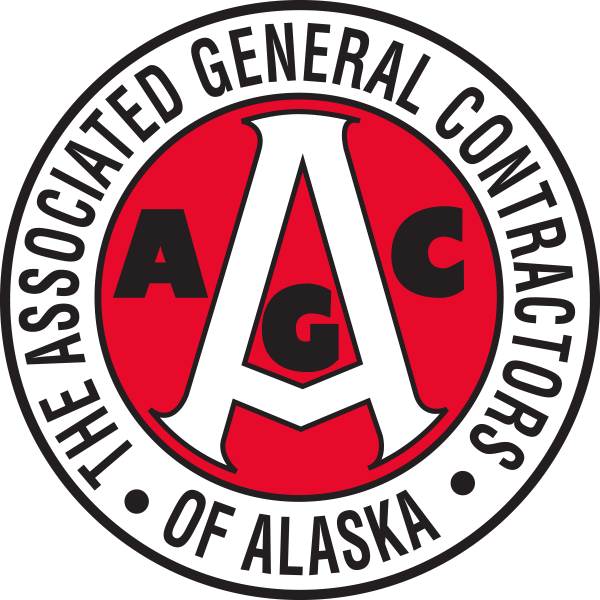
Hamilton Construction

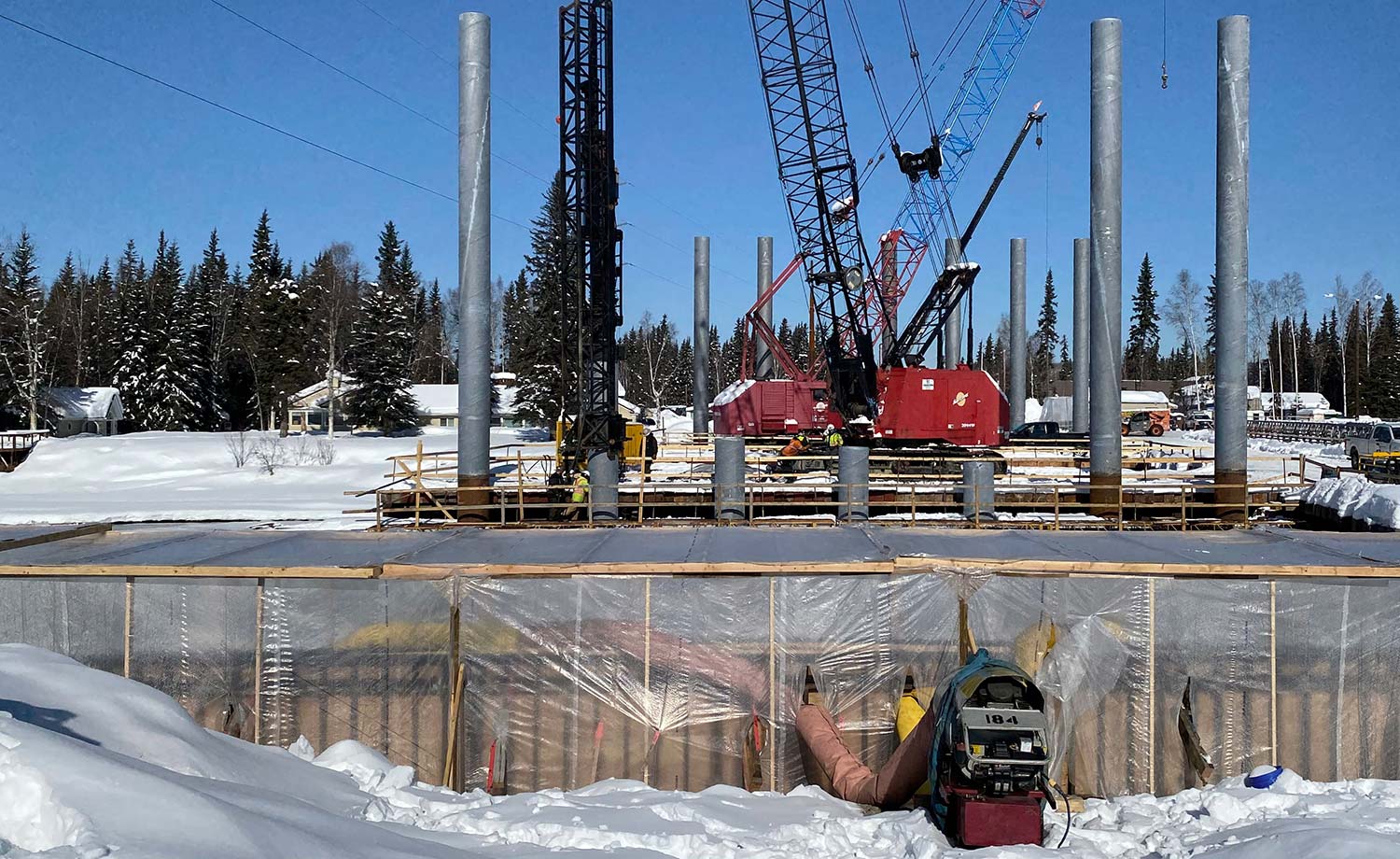
n a state with few roads, bridges become a crucial connector. A closed or damaged bridge can cut off an entire community. Compounded by Alaska’s challenging environment and short construction season, the need for bridge construction or repair to happen quickly is critical.
That’s how Hamilton Construction Alaska Co. made a name for itself in the ’70s, when the company installed more than 450 bridges throughout Alaska, using accelerated construction techniques and Hamilton-patented prefabricated bridges, or “EZ Bridges.”
“That was during the forest industry boom—we did a lot of those bridges for the National Forest Service, from the Tongass National Forest, spread all the way through the state,” says John Szymik, co-owner and operations manager for Hamilton Construction in Alaska.
Steady Growth
In 2011, Szymik moved to Alaska to lead Hamilton’s Alaska Division and bid on the Trail River Project near Moose Pass as the division sought to grow. That year, the company initiated just one Alaska-based project; the following year, it did two. Since then, Hamilton’s Alaska Division has grown substantially: In 2022 alone, it will complete seven projects in Alaska.
“We try to optimize smart and steady growth to limit those big booms and busts,” Szymik says.
Hamilton has done that in part by taking a project-first management approach on all their projects, including design-bid-build, design-build, and construction manager/general contractor, or CM/GC, projects. Hamilton’s clients include Alaska’s Department of Transportation and Public Facilities, or DOT&PF, the Alaska Railroad Corporation, the Matanuska-Susitna Borough, and the Federal Highway Administration.
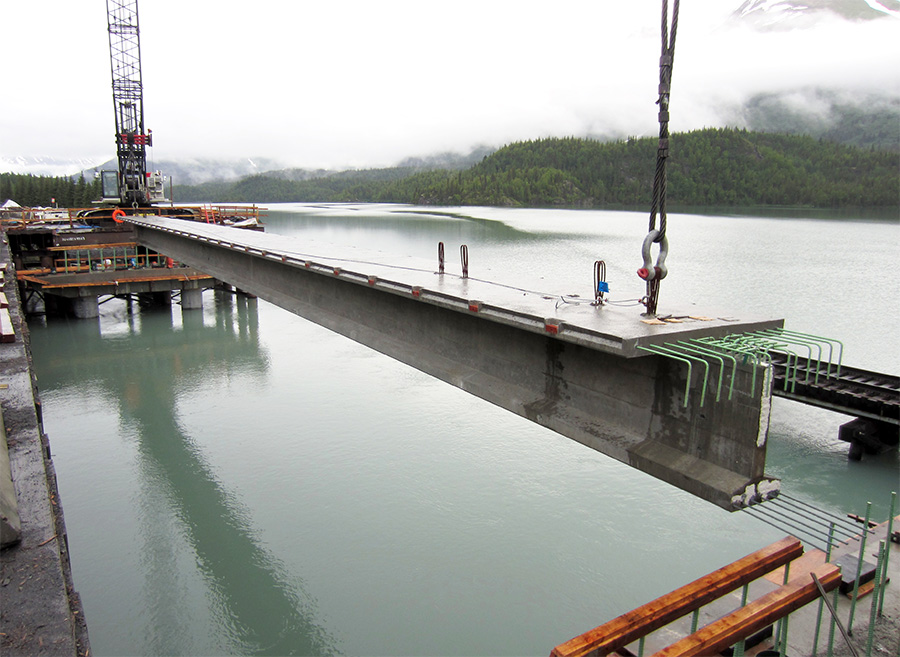
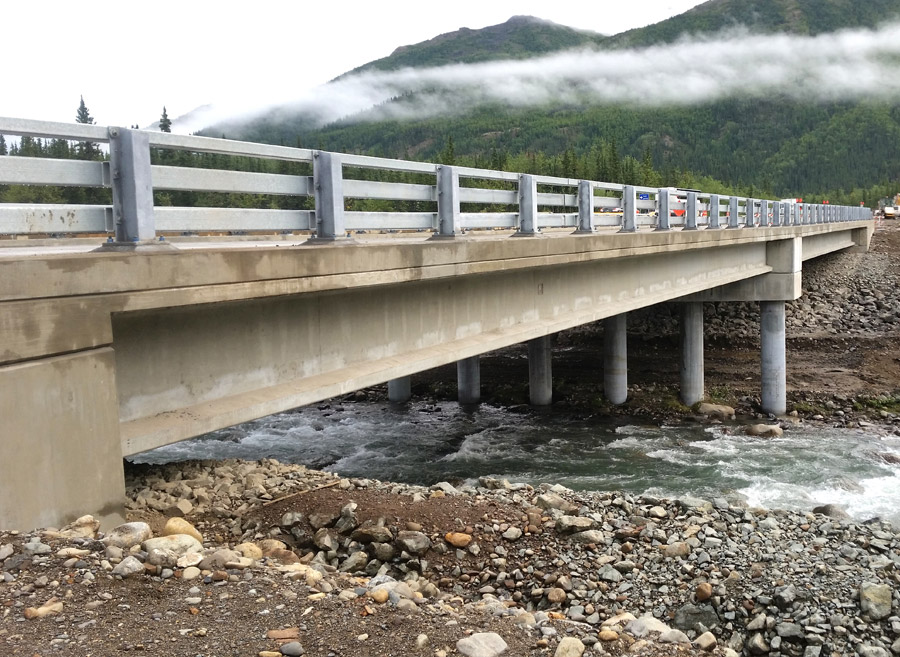
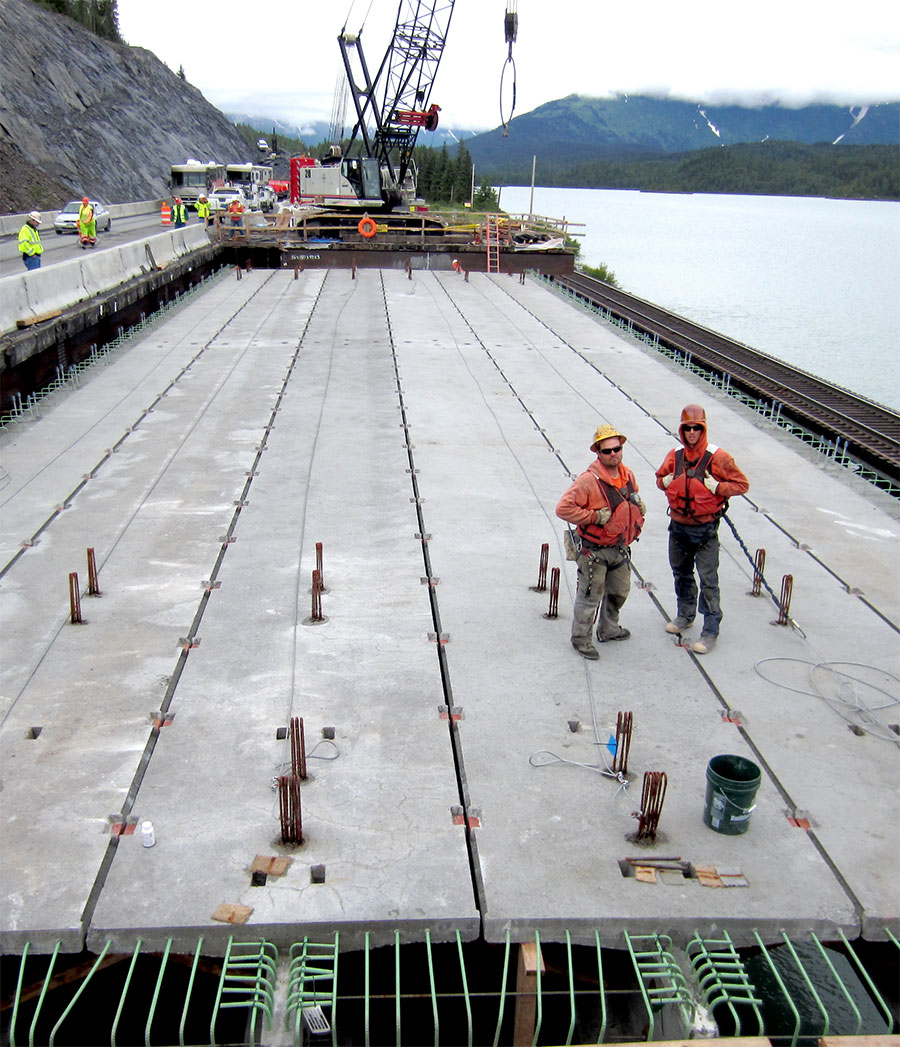
Top left: Setting girders on the Seward Highway over the Trail River.
Left: The Trail River Bridge was one of three bridges Hamilton replaced during this project on the Seward Highway.
Top right: Hamilton was the first CM/GC contractor for ADOT&PF with the award-winning Parks Highway MP 237 Riley Creek Bridge Replacement project.
Bottom: Hamilton used the river ice as a template for pile driving and access for welders on the Chena River Bridge project on University Avenue in Fairbanks.
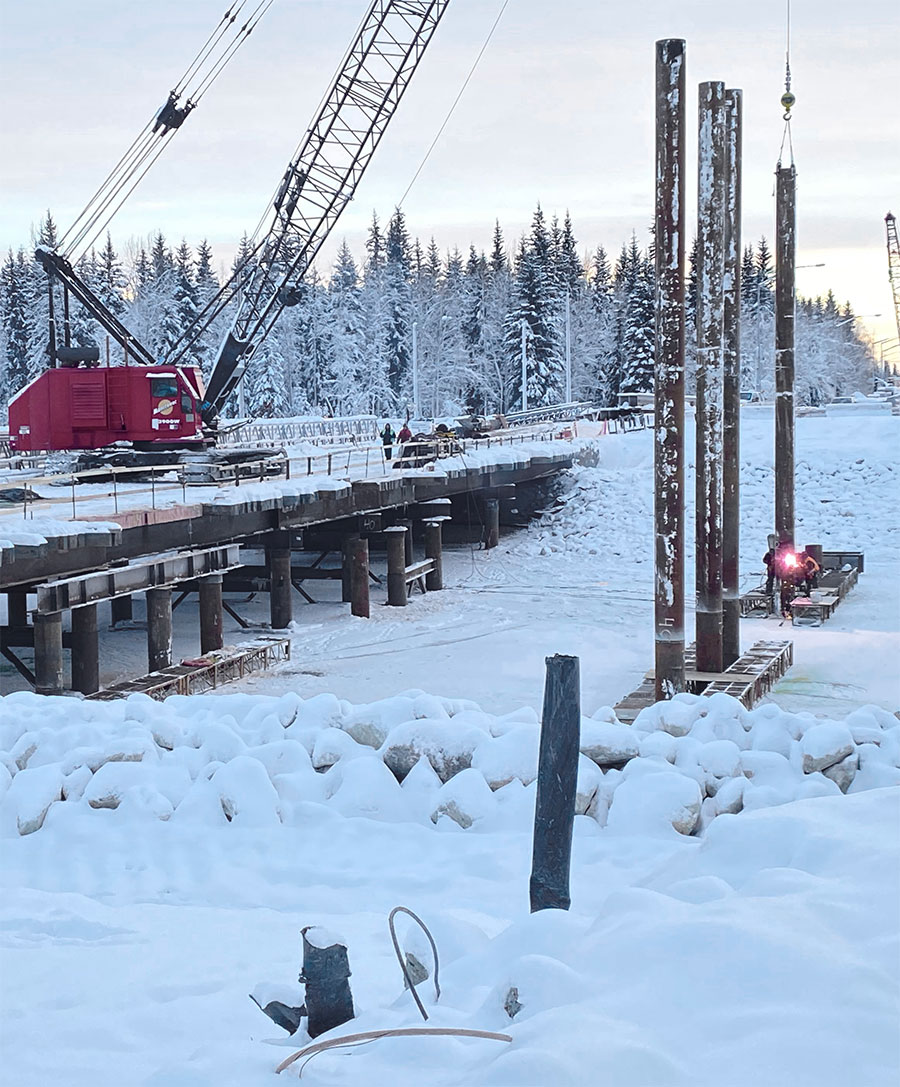
In 2013, Hamilton became the first heavy civil CM/GC contractor for DOT&PF with the award-winning Parks Highway MP 237 Riley Creek Bridge Replacement project.
“Hamilton came on early and helped us refine the design and optimize the cost of the Riley Creek Bridge,” recalls Lauren Little, DOT&PF’s project delivery team lead for that project and for another Hamilton CM/GC operation: the rehabilitation of University Avenue in Fairbanks, which replaced the Chena River Bridge crossing.
The company devised creative staging tactics to keep traffic moving as they replaced the bridge and realigned the Parks Highway to upgrade a substandard curve and add turn pockets to improve motorist safety.
“Riley Creek was a very high-profile project, being right in front of the [Denali] National Park entrance,” Little describes. “The work they did there really contributed to long-lasting positive relationships between [DOT&PF] and the Park Service; we’ve had other partnership projects since then, building on the relationships Hamilton helped foster.”
One of Hamilton’s greatest challenges in Alaska is the short construction season all contractors face here. For the Chena River Bridge replacement, that narrow window was compounded by environmental commitments that limited the contractor’s ability to occupy the area.
“We had the temporary pedestrian and contractors’ work bridges in a state park, so we had to be out of there within one season,” Little describes. “I don’t think people appreciated how aggressive the timeline was for that. But Hamilton was very committed to our goals of getting that built and out of the state park on time.”
Hamilton is known for its exceptional logistical planning. The company collaborates with every project owner by performing design reviews, providing input on innovations, and analyzing and evaluating constructability during design phase milestones. The collaborative relationship allows Hamilton to assist in shaping the scope of work to ensure the final product meets or exceeds project goals.
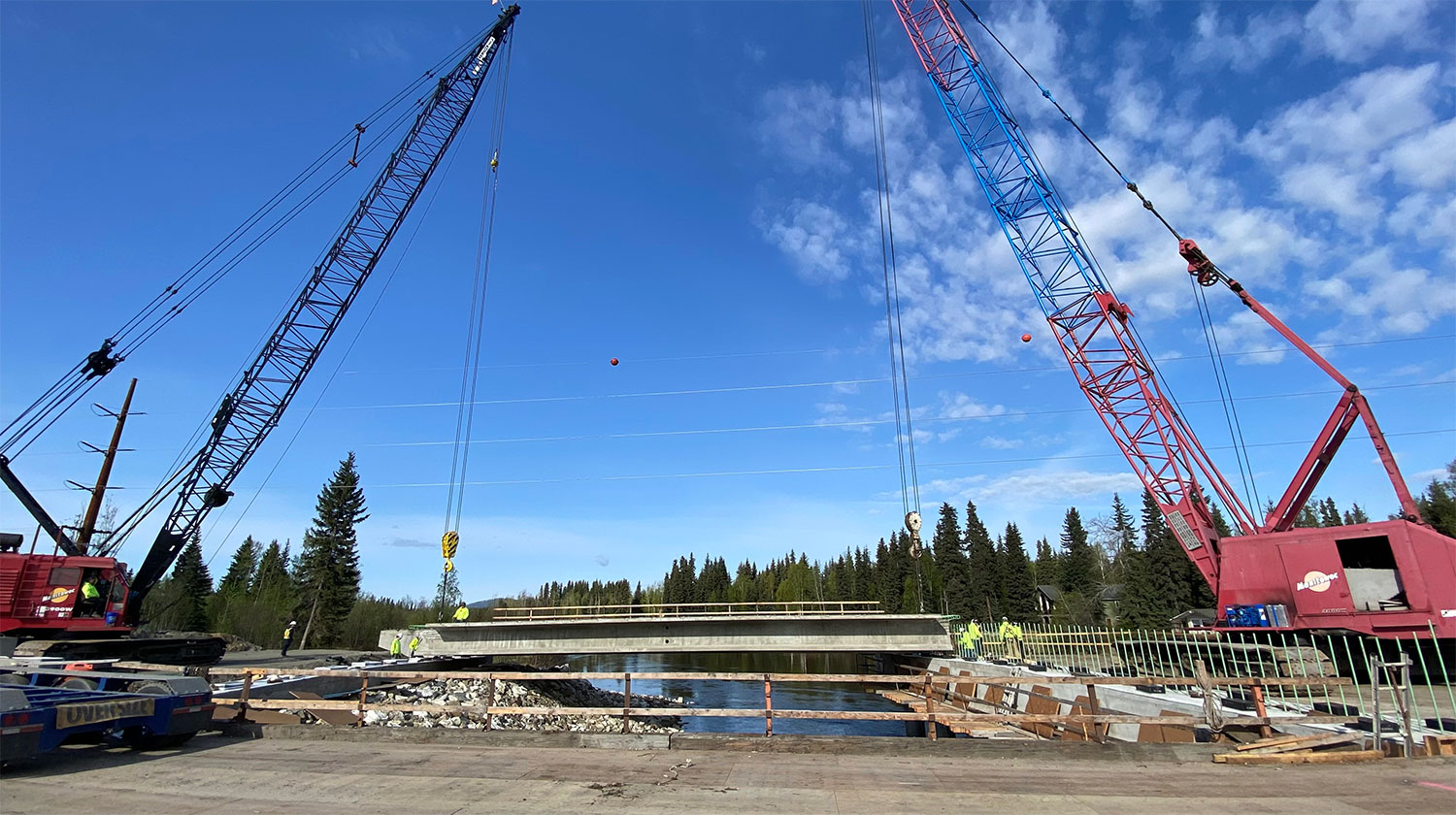
Chena River Bridge Girder Setting on University Avenue in Fairbanks.
Szymik emphasizes that, given the geographical logistics Alaska presents, advanced planning and procurement is key to a project’s workflow. Anticipating factors like the need for cold weather equipment, heating pile drivers in the winter, and lag time in product shipping from places like Seattle allows him to deliver projects within the tight construction windows Hamilton often operates.
Hamilton has long fostered relationships through its involvement in the Disadvantaged Business Enterprise, or DBE program. Hamilton not only solicits for quotes from DBEs, but also creates custom scopes of work and includes mentoring and contract administration support.
“We don’t just want to offer them a job and let them go; we actively support them and set them up for success,” Szymik says.
Hamilton’s membership with AGC started in 1943; in 1954, its founder, Harry Hamilton, served as president of the Oregon-Columbia Chapter.
Szymik values AGC of Alaska for how it allows this state’s contractors to network. “We’re a very small community in Alaska,” he points out. “AGC does a great job representing the heavy civil contracting industry in Alaska and are strong advocates for all their members.”